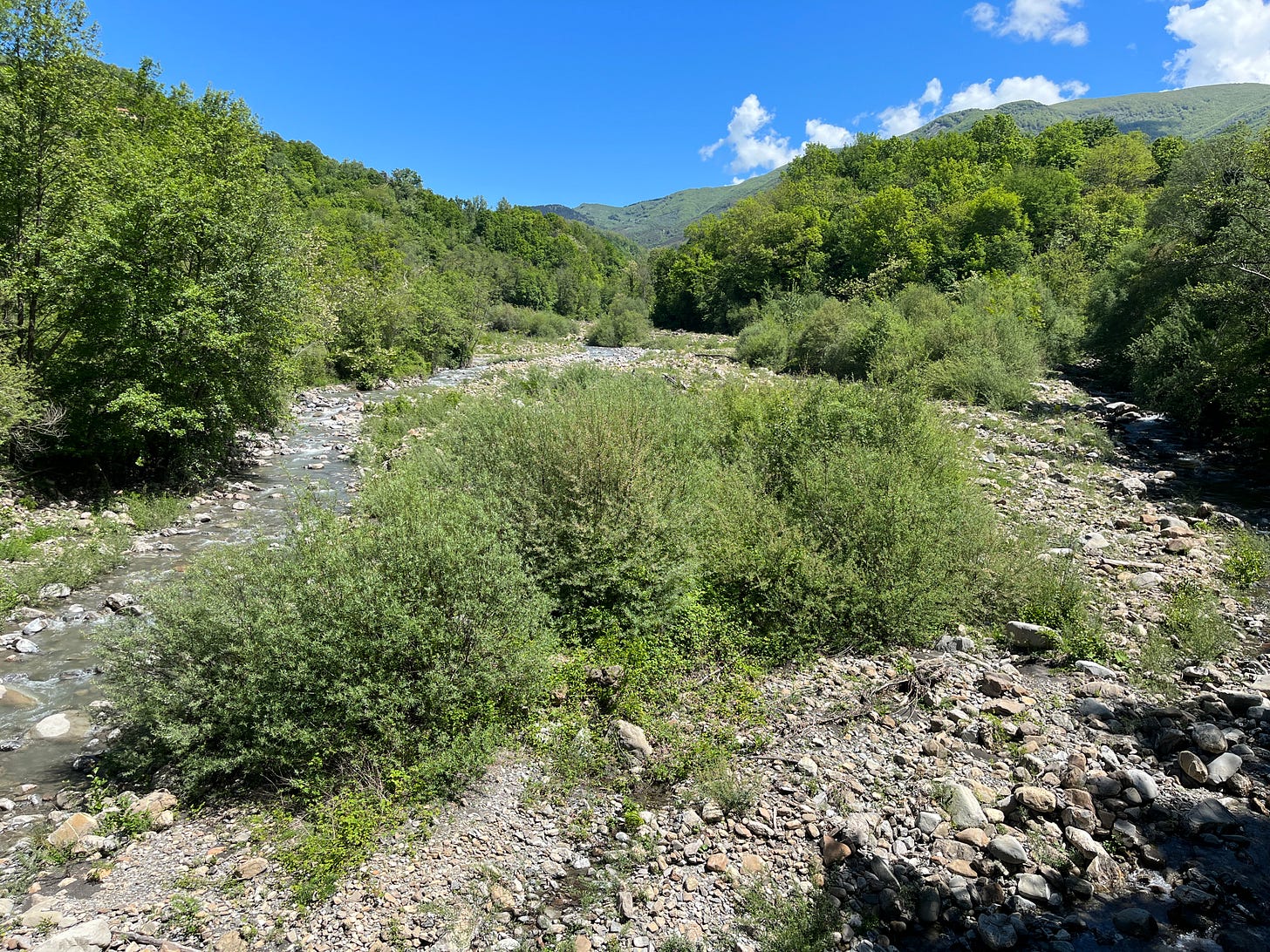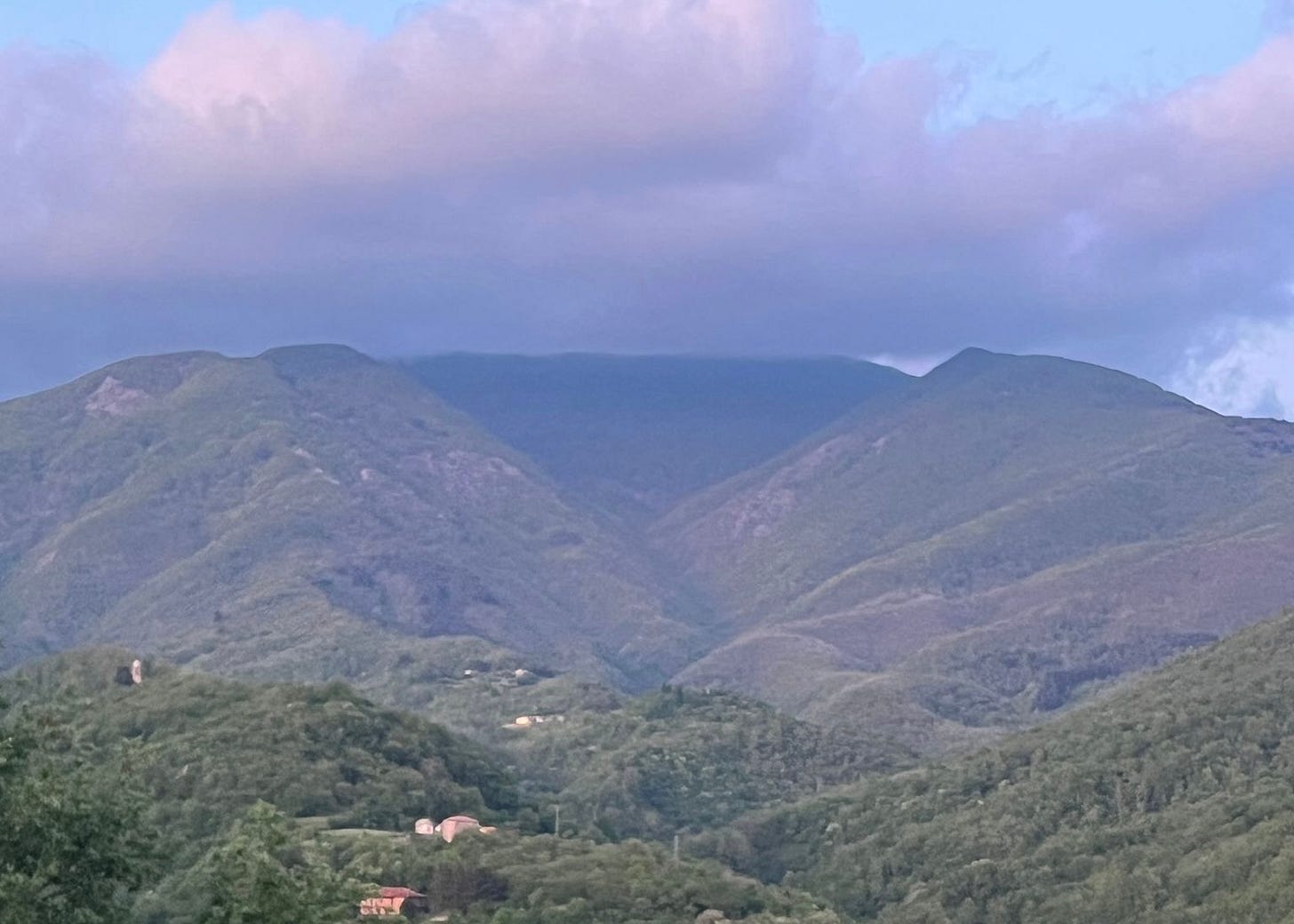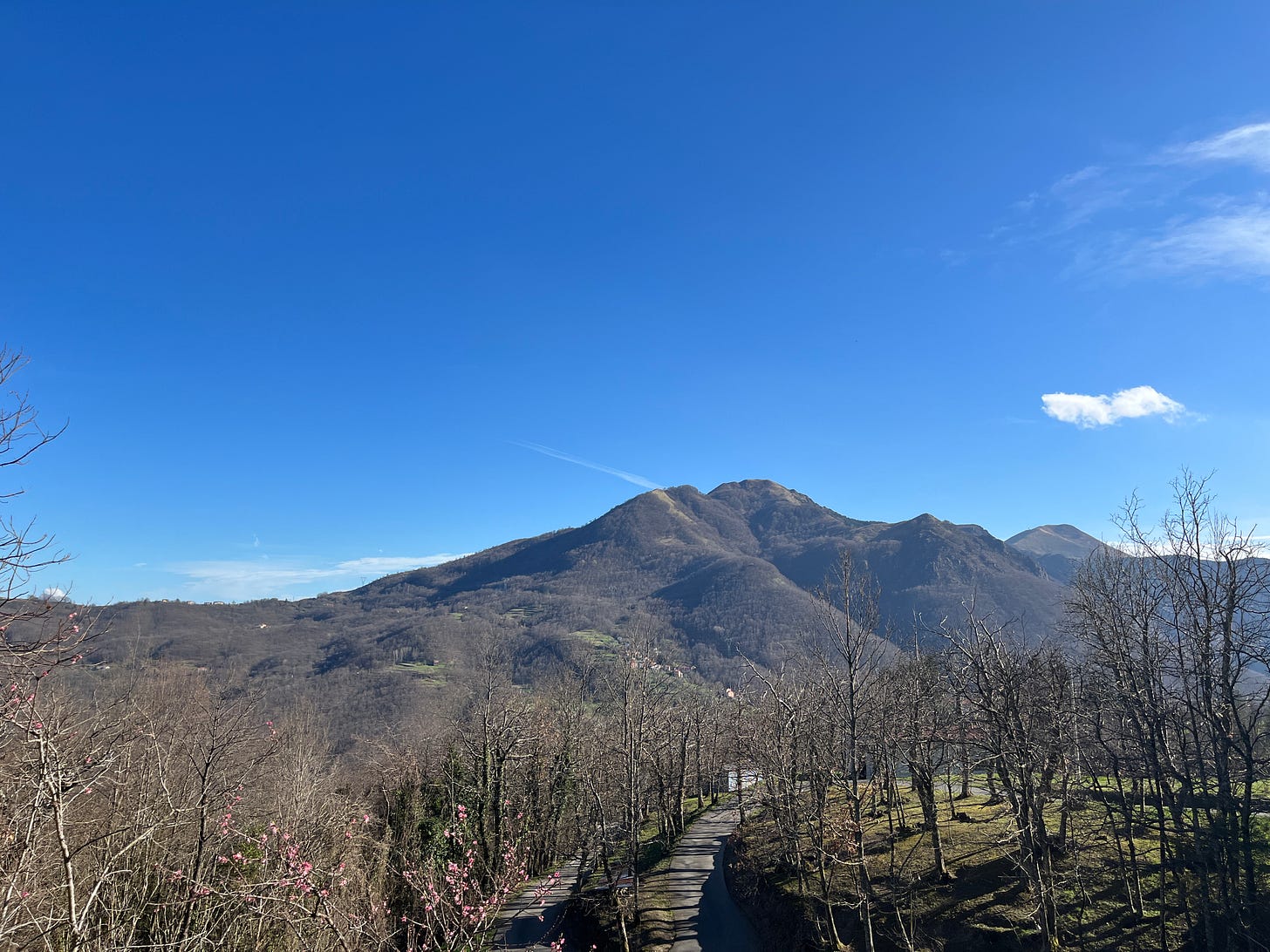Monte Gottero
Guest contribution from Andreas Weber
This week’s post comes from my colleague Andreas Weber, in which he describes an encounter with Monte Gottero in northern Italy as a sentient presence who ‘looks at me and tells me he is there, and I am there, and I am seen through and through’.
The wild waters come running down to the left hand of the narrow concrete bridge with its rusty railings. Right under its weathered pillars merge two mountain torrents flowing from the high valleys of Monte Gottero, the peak summit on this part of the Apennine crest, in La Spezia province, close to the eastern Riviera coast. Merging, the two creeks form the Stora river which to the right of the bridge winds its way down south over rounded blocks and whitish and pink and grey boulders, heading to the Mediterranean.
I can hear the roar of the waters well before they come into view around the curve of the path. The two mountain torrents cascade steeply over the stones in their wide rocky beds. They don’t carry much water, which is unusual for this time of April. The whole river plain lies exposed between the water courses, a desert of pastel-coloured boulders, dark sand, grey splintered trunks jammed between giant blocks of stone. In between, the willows show their first delicate leaves, transparent streaks of greenish-yellow, which rock softly in the cool breeze coming from above, from the slopes of the high summit where the distant dwarf beeches still linger bare and brown.
Clouds drift over the sun, covering it, uncovering it again, letting the light pulse over the fresh leaves and glistening stones, making the cascades in the creeks flash unexpectedly with silver, as though liquid light gushed downhill to be transported to the luminous ocean, to the “wine-dark sea” of the Mediterranean. The summit of the Gottero appears and disappears, then emerges again, crested with a silver streak of light, radiating luminescence downward where I stand, wrapping me in light, and then retiring again into the clouds and leaving me in the shadows, in the cold and clean mountain air.
I have come here to sit awhile with the Stora river and its wild confluents. I am here because I want to be profoundly close to the river and this mountainside. I intend to visit the river and the mountain as friends, as persons who like it when I show up. I have known this place intimately since I first came into this remote mountain corner of Italy twenty years ago. The slopes and clefts of the terrain have seen many turns of my fate. They have welcomed me in ecstasy and in despair. But I had never done what I do today: coming here not in order to visit an aesthetic piece of landscape, but to meet the living biosphere as kin.
I intended to quickly climb down to the living waters at my feet, but I stop on the bridge and look up to the mountaintop. I see it parting the clouds, emerge in bright shine and hide again under a thick blanket. And in this moment, I know that the Gottero is looking at me. The mountain has changed from an imposing feature of the landscape into a being, and I am in direct contact. I feel that the skin on my back goes crinkly and my neck hairs raise with gooseflesh. I could search for so many expressions to describe the seeming beauty of the Gottero above the wild waters merging under my feet, but that would miss what I understand here. Rather I realize that what I used to call beauty in truth is power, and this power holds me in its focus. Beauty is not the experience of an abstract principle, it is the encounter with another being [1]. Then Gottero looks at me and tells me he is there, and I am there, and I am seen through and through.
In the moment I realize this, a large buzzard emerges from behind the white blossoms of a flowering cherry tree across the opposite river bank, flying towards me from a northeastern direction. He makes a couple of huge beats with his wings, then soars at low altitude, circling directly above me. I can see his head inclined, his brown eye gazing down. I look back at him, into his dark eye. After a couple of rounds the raptor slowly flaps his wings again, gathers altitude, crosses the stones in the wide river plain and settles on the other slope of the valley in the midst of some old barren chestnut trees.
When I clamber down into the riverbed, I think of another time I have stood with a mountain in silence with the distinct impression that I was relating to a person. It was on the terrace of a lodge in Pelling, Sikkim, in the Himalayas. It was November, and the days were misty, the skies covered with a sweet, semi-transparent white, making the high peaks to the north invisible for most of the time. But for a short half hour in the mornings the clouds opened, and I could see the Kanchenjunga twice on two consecutive days.
The peak, one of the ‘Eightthousanders’, is fifty kilometres away from Pelling, but it had been clearly visible in a high-altitude opening in the clouds. Only its peak showed through, at a place so high in the sky that I was surprised to find it there. I stood and watched as long as the sky kept open, and then the Himalayan peak vanished again, softly covered by the sweet haze in front of which stood out the pines and the pastel pink blossoms of the Japanese cherries. When I checked out a day later, the local owner of the lodge asked me if I had seen the Kanchenjunga. “Yes”, I replied, “for a short while”. “Then you have received many blessings”, the lodge owner said. He knew that mountains speak, that they communicate their powers.
After I have stayed a while with the gushing and splashing waters of the mountain river, thinking about the mountain and looking at the stony bed down south where it takes another bend and then follows the blue flank of the last ridge which separates it from the Mediterranean, I decide to leave. I stretch my limbs and clumsily climb up the large boulders of the riverbank that high water has washed out of the earth during the last winter. When I stand beneath the Gottero again and look up, another bird flies out from the same cherry tree where the buzzard had roosted. This time it is a wood dove, heading right over my head to the other side, loudly clapping its flight feathers on its wings together.
1. Weber, A., Skincentric Ecology, in Kinship: Belonging in a world of relations., G. van Horne, R.W. Kimmerer, and J. Hausdoerffer, Editors. 2021, Centre for Humans and Nature Press: Libertyville, ILL. p. 43-51.




